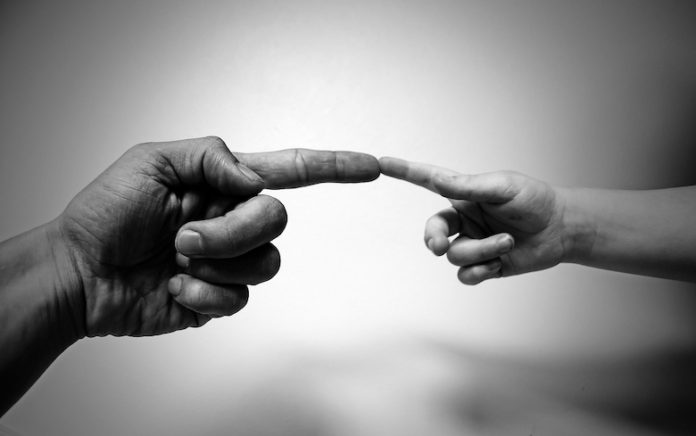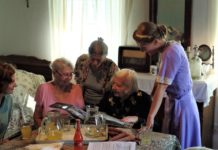Addressing peer violence in some schools serves as a genuine example of best practices. A school psychologist from a small town in Croatia has, over the years, worked intensively with her colleagues to reduce peer violence through preventive measures and consistent practices. A significant factor contributing to this success is the shift in family structures, characterized by younger parents and fewer children per family. The results are evident in the reduced number of peer violence incidents and the effectiveness of handling situations when violence occurs.
Some school staff members participated in a Life Skills Training Program developed by the county’s Institute of Public Health. The program’s handbook emphasizes preparing students to face life challenges by acquiring knowledge and skills to: Develop a healthy self-image, enhance decision-making and problem-solving abilities, communicate effectively and avoid misunderstandings, cope with anxiety, form new friendships, stand up for their rights, resist unfair demands and peer pressure, withstand advertising influences.
The handbook is tailored to pupils of different age groups and includes practical exercises that educators implemented with children. One school staff member involved in the workshops highlighted the importance of continuous training:We live in a time of lifelong learning, acquiring diverse skills and knowledge. It’s crucial to communicate and share information, particularly with children. If children lack the information and skills to respond in various situations, we cannot expect them to adjust their behavior. Children certainly need parental support, but today that alone is not enough. Responsibility also lies with all of us who work with children in any capacity for example, in schools, social welfare centers, and public health institutes. If we are persistent and responsible enough, some of what we constantly repeat will eventually be heard by children, not just listened to, and it will be stored as information, as knowledge they can draw upon when they need it. The workshops actively involved children, not only as participants but also as presenters and program creators, adding a fresh dimension that enhanced engagement and attention.
Workshops with children are part of regular Pprogramming. These workshops have become an integral part of the school’s activities, covering various topics and methods to:educate pupils on different forms of violence, teach communication skills to prevent violence, offer ways to assist victims of violence, highlight available resources for bystanders of violence, discuss the consequences of peer violence for both victims and perpetrators. Additionally, workshops addressed media influence, learning techniques, and other relevant daily life topics. The school also incorporated UNICEF-organized violence prevention workshops and held thematic parent meetings to help them recognize behavioral changes in their children and seek appropriate assistance.
The School’s response to incidents of violence
When peer violence occurs, the school’s response procedure, spearheaded by the psychologist and supported by teachers and the principal, is systematic and unyielding. When we notice that peer violence has occurred, we immediately intervene to stop it, says the school psychologist, continuing: A conversation with the victim follows, their parents are contacted, and in severe physical cases we notify the police and, if necessary, arrange a medical examination for the child, whether it involves an outpatient check-up or the arrival of emergency medical services.Parents are directed to additional professional resources if needed. A meeting with the perpetrator is conducted, typically with at least one other school professional present. The aim is to understand the root causes of their behavior. This meeting excludes the presence of the perpetrator’s parents, who are consulted separately afterward. These children developed a resistance to attending school, an institution that was supposed to be their safe environment but had become a source of insecurity, fear, and sadness. That is why it is essential to provide support to the victim. It is not enough to simply talk; practical measures must also be taken, which can sometimes be long-term, such as providing appropriate psychological assistance to empower them, help them immediately recognize violence, and prepare them to respond differently, explains the school psychologist. She adds that, at times, this also involves professional assistance that children receive outside of school. Conversely, perpetrators’ reactions vary. Those who act out in isolated incidents often recognize their mistake when faced with the consequences. However, habitual offenders may deflect blame or deny responsibility, requiring long-term interventions. Such children do not believe that the problem lies with them and therefore reject any help. When appropriate, controlled mediation attempts are made for milder cases of violence. Involving classmates in gathering information has proven valuable in preventing planned violence.
The process of working with both the victim and the perpetrator is lengthy because both children are unhappy, suffering, and in need of help. Therefore, it does not end with merely stopping the peer violence, just as it does not stop with the implementation of one of the pedagogical measures available to the school for sanctioning unacceptable and/or violent behavior. After the entire process is completed, depending on the severity of the violence, a verbal warning, a warning, a reprimand, a strict reprimand, or relocation of the perpetrator as the final measure available to the school may be issued. My interviewee says that in her fifteen years of working as a school psychologist, she has never had a case of relocation of either the perpetrator or the victim, but she believes that when parents decide that relocating their child is the best measure, it is usually the right decision
Parental Involvement
Parental reactions vary, but in this school, they have generally been cooperative, accepting suggestions and seeking professional help when necessary. A psychologist from a community support center noted similar experiences, emphasizing the need for parental awareness and active involvement in resolving issues. In the Center, we have good examples of cooperation between parents on both sides in situations of peer violence. Parents often openly seek advice and guidance on how to handle their children. With the acceptance of professional analyses and suggestions, and with motivation, we collectively reach the goals we want to work on. Parents often highlight the skill of standing up for themselves as an area they wish to improve. On the other hand, there are parents, as well as children, who are not aware of their involvement in peer violence – in such cases, we first strive to raise their awareness, and then work on the subsequent steps. Alongside professional assistance and monitoring, intense parental involvement is necessary, as well as cooperation with specialists to ensure consistency of actions in different contexts.
The school’s example underscores the effectiveness of preventive strategies. The 2023 Ombudsperson’s report highlights the obligation of schools to create and implement preventive strategies for addressing peer violence. Despite progress, there is inconsistency in how schools approach the issue. My interlocutors emphasized that, in addition to preventive education for pupils and parents, attention should also be given to developing better cooperation between various relevant institutions such as schools, social welfare centers, school medical institutions, and the police, as well as educating teachers and professors. From conversations with colleagues, they conclude that there is a desire and need for additional education on how to prevent peer violence, as well as how to respond in cases when it occurs.
And finally, what do the children have to say about it: Children believe schools are the best setting for educating both children and parents about violence, especially cyberbullying, because we all consider school as a natural place for teaching both adults and children. They propose introducing a dedicated social subject on child protection and banning physical punishment, which some parents still practice. Ultimately, addressing peer violence demands a collective effort from teachers, parents, and the broader community, ensuring that every child feels safe and supported in their learning environment.
The publication of this text was supported by the Electronic Media Agency as part of the program to encourage journalistic excellence












